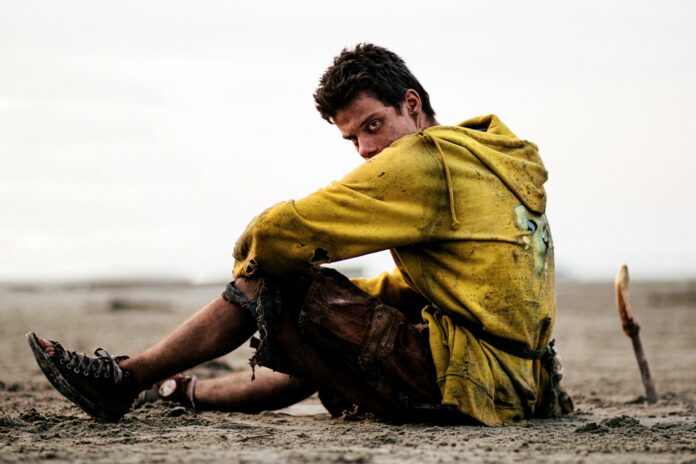Entire chapters in history books could have been written on the causes and reasons that led to the end. But after the end no more books were written.
These are the words that open La terra dei figli (2016), the award-winning graphic novel by Gipi (back in bookstores for Coconino Press/ Fandango) that inspired the film adaptation of the same name directed by Claudio Cupellini (Lezioni di cioccolato, Una vita tranquilla, Alaska, Gomorra – La serie), out of competition at the 67th Taormina Film Fest, and in theaters from July 1 for 01 Distribution.
In a world where civilization is extinct and the surviving human beings struggle (even among themselves) for survival, a father hardened by the catastrophe (Paolo Pierobon) and a fourteen-year-old son (Leon De La Vallée) live on a stilt house on the shore of a lake. The key element of the story is a notebook where the parent writes down his thoughts, but which is indecipherable for the boy.
The film, produced by Indigo and Rai Cinema with WY Production is scripted by Cupellini himself together with Filippo Gravino and Guido Iuculano, with original music by Francesco Motta.
Fabrizio Ferracane, Maria Roveran, Maurizio Donadoni, Franco Ravera, Valerio Mastandrea (as the Executioner) and Valeria Golino (as the Witch) are also in the cast.
“I’ve been a fan of Gipi for years,” director Claudio Cupellini told us, “and when I came across ‘La terra dei figli’, I was blown away. A bit for the exoticism of the setting, something I would never have thought of, but above all for the “sentimental” component of the story: a story of formation, where there is a complex relationship with the father. An aspect also present in my previous film «Una vita tranquilla». It also deals with universal and fundamental issues such as memory and remembrance. All themes that are dear to me”.
‘La terra dei figli’ is a dystopian work
A genre that is gaining ground in Italy “because we are beginning to have the technical means, knowledge and ability to tell different stories,” Cupellini further explains. “It’s no coincidence that Niccolò Ammaniti, in the period in which Gipi was making La terra dei figli, wrote a dystopia like Anna, which very quickly became a TV series.
There is definitely a feeling of general uncertainty about the future, and perhaps those who wrote about it before the pandemic already smelled something in the air. It is also a way of talking about the present through a wide-angle lens, which represents reality in a ‘hyper-realistic’ way”.




